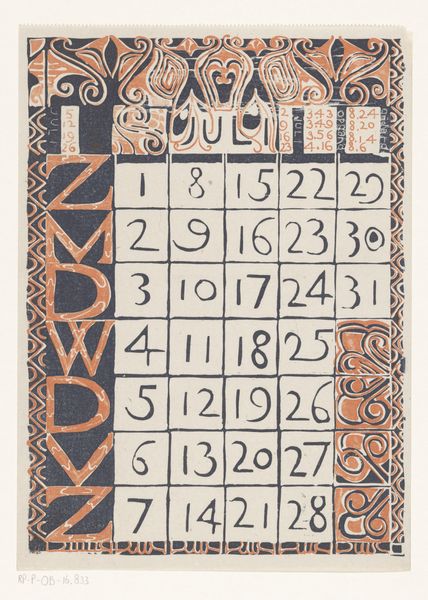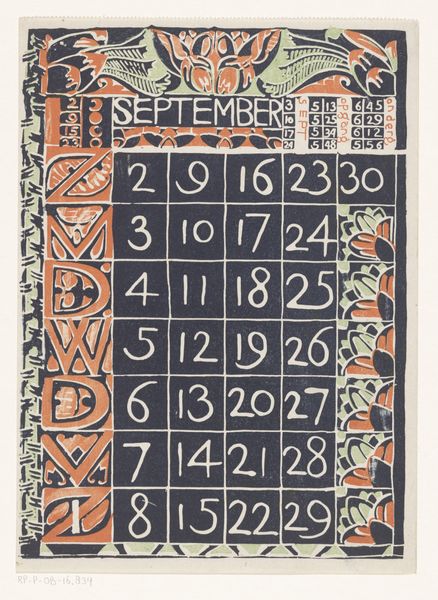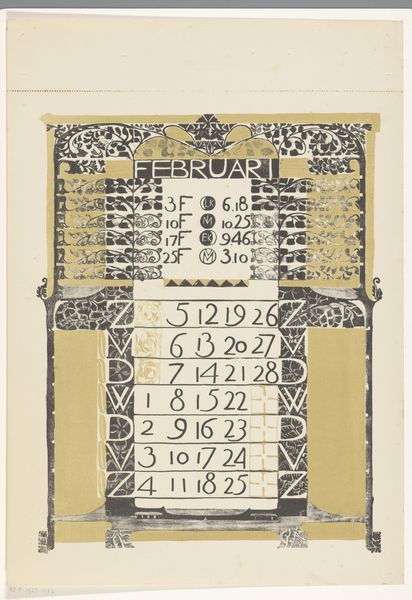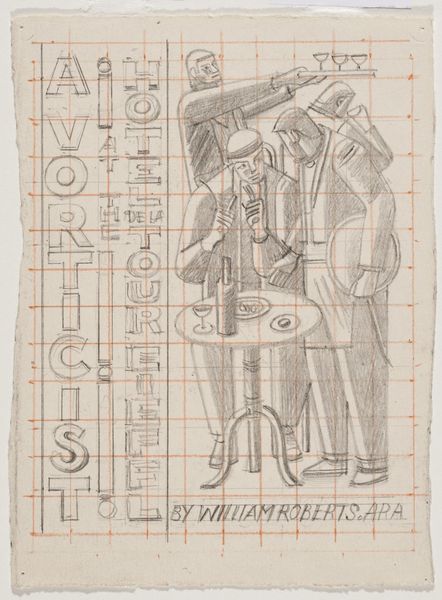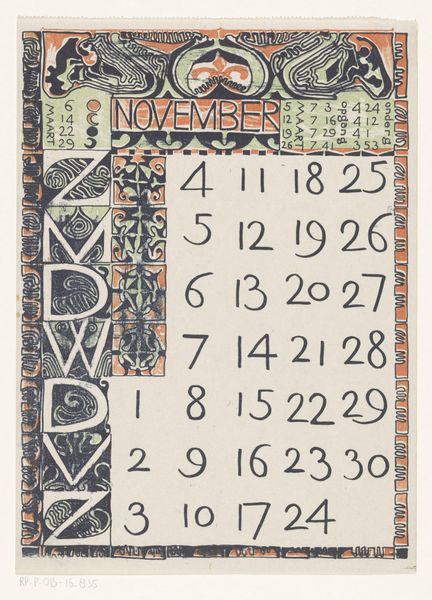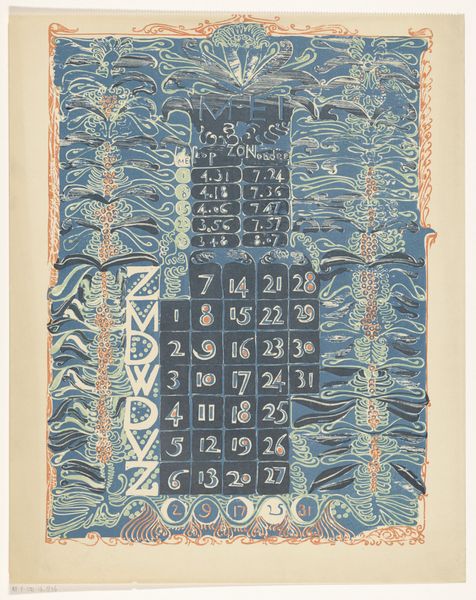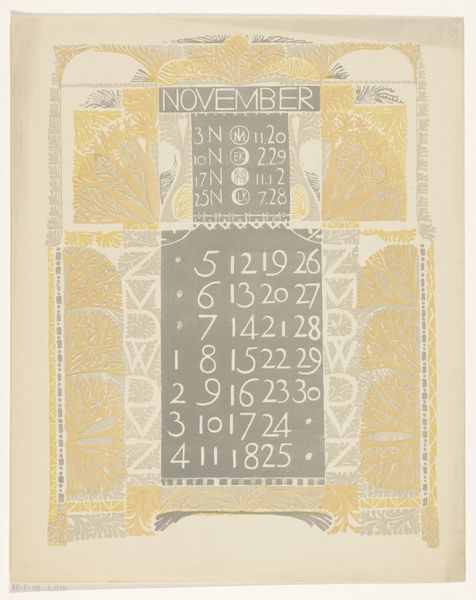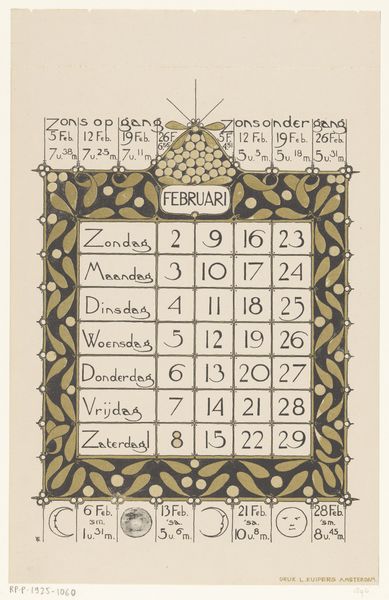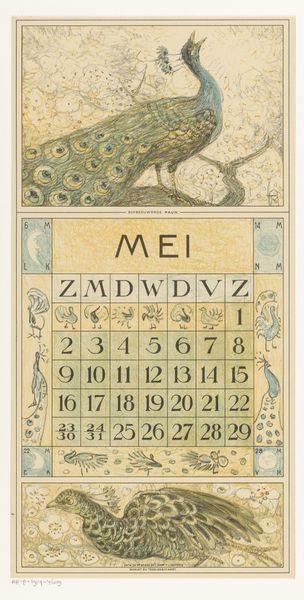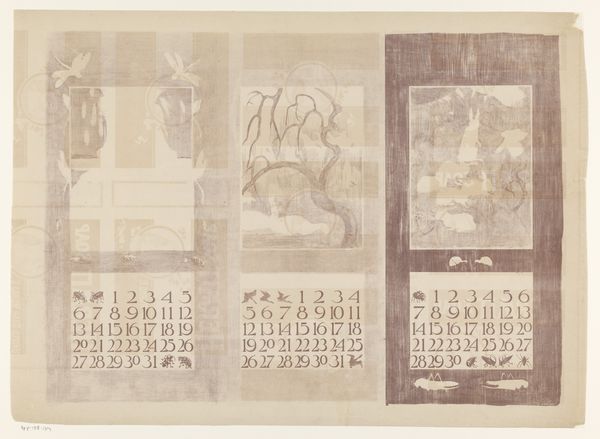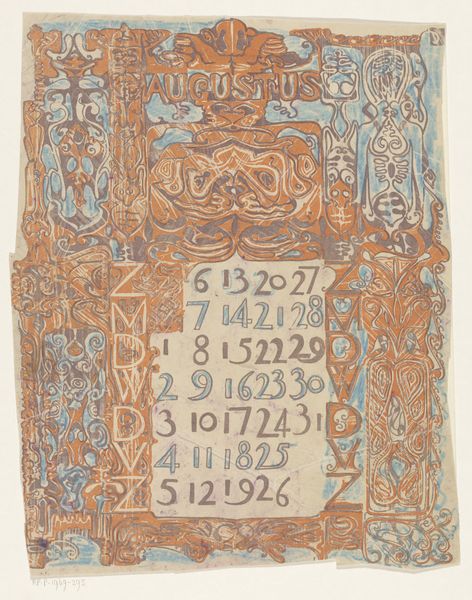
graphic-art, print, poster
#
graphic-art
#
art-nouveau
# print
#
organic pattern
#
geometric
#
decorative-art
#
poster
Dimensions: height 244 mm, width 176 mm
Copyright: Rijks Museum: Open Domain
Curator: Here we have "Kalenderblad mei 1900," or Calendar Sheet May 1900, a graphic print from the hand of Carel Adolph Lion Cachet, dating back to the turn of the century. Editor: Oh, it’s absolutely charming! It strikes me as so self-consciously decorative, yet somehow utterly functional. Those muted colours! There’s an earthy feel that tempers the geometry. Curator: Indeed, the work exemplifies the Art Nouveau style, and Lion Cachet frequently engaged with decorative arts. One can really observe how the artistic principles intersect in a work meant for everyday use. Notice the abstracted organic forms flanking the calendar itself. Editor: It makes me think about what it meant to make the everyday beautiful. We tend to romanticize ‘high art’ as distinct from craft or mere production but seeing the calendar sheet I think how artificially we separate artistic experience and labor in that era. I want to consider who was consuming these calendars—were they widely accessible or luxury items for a select few? What processes were employed to create such an elaborate, patterned calendar? Curator: Those are pertinent questions. The labor involved must have been considerable, each form and numeral carefully considered, carefully produced, but then again, you begin to consider Cachet's artistic intention as more practical than previously suggested, and perhaps this wasn't the intent for it, originally? The way time is carved up – days become objects, beautiful designs in them, too. The design, somehow, seems outside of time, doesn't it? A reflection of an artistic era and of something... greater? Editor: Yes, it prompts that push and pull between lived experience and utopian aestheticism. These ornamental details become signifiers for a particular aspiration—beauty, accessibility and, perhaps, some level of mass production. In short, it highlights the artist's connection to and influence on production techniques, in which time, ironically, became an ornamental feature in Art Nouveau! Curator: So perhaps this May calendar represents that—an echo of a past trying to project itself into a future, now long passed. Editor: Indeed. And for me, it connects art directly to broader material culture, blurring distinctions and showing that creativity always engages with how things are made and by whom.
Comments
No comments
Be the first to comment and join the conversation on the ultimate creative platform.
